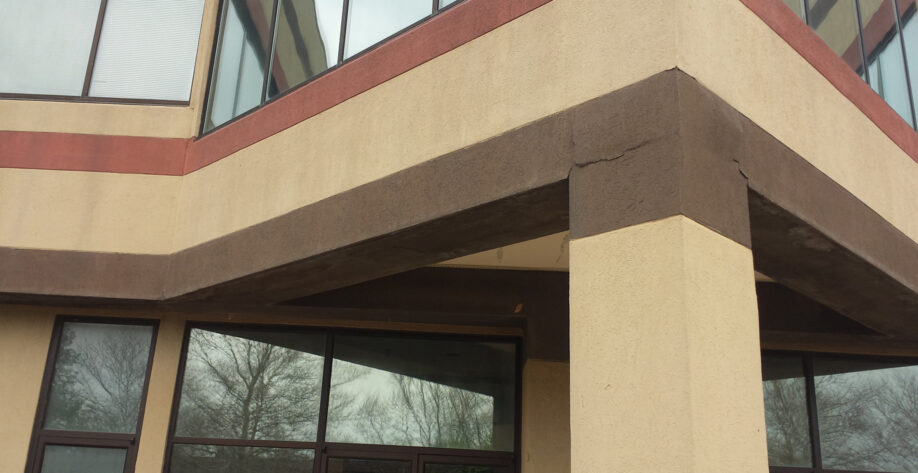What is EIFS?
EIFS is an acronym for Exterior Insulation Finish System. EIFS is a non-load bearing, exterior wall cladding system that consists of continuous insulation board attached either adhesively, mechanically, or in combination, to exterior sheathing, which is covered with a reinforced base coat and textured protective finish coat. There are two types of EIFS: the Face-Sealed System and the Drained System. Face-Sealed EIFS is a sealant dependent “barrier system” that is fundamentally flawed due to its reliance on perfect workmanship and material performance to provide a 100% moisture barrier. The Drained System, predominantly used today, includes provision for drainage of moisture via flashings and open vertical planes between the exterior sheathing and the insulation board. This system helps to manage moisture that may enter the wall cavity. EIFS was first developed in Europe and was introduced to the U.S. as an energy-saving building system on commercial buildings in the late 1970s and residential homes in the early 1980s. The EIFS Drained System was introduced in the late 1990s.
Issues with Face-Sealed EIFS
Commercial and residential buildings constructed between the late 1970s and the early 1990s that have Face-Sealed EIFS cladding could potentially have one or more undesirable conditions caused by bulk water intrusion combined with
inadequate wall drainage. Water trapped within this wall system can cause further issues when combined with HVAC deficiencies. Defects can include microbial growth, staining of interior finishes, reduced structural integrity (corrosion and/or decay of load bearing walls), insect infestations, increased interior humidity, and cracking of the interior and exterior finishes. Although these issues are often readily apparent, decay and corrosion can be concealed and may result in latent structural damages.
Deferred Maintenance
The noted defects are typically exacerbated at building walls that are not periodically maintained. One of most common causes of moisture intrusion through Face-Sealed EIFS are deteriorated sealant joints and window systems. It should be noted that the service life of most windows is less than 40 years, and the service life of most sealants is less than 15 years. This implies that buildings constructed with Face-Sealed EIFS likely have windows that are approaching the end of their serviceable life, and that replacement of exterior wall sealant joints should have occurred at least twice during that time.
The Consequences
Deferred maintenance of sealant joints and windows in Face-Sealed EIFS can result in significant construction costs to repair or replace the EIFS, interior finishes and windows, the abatement of hazardous materials (microbial growth), and the loss of revenue associated with the construction and abatement (which may include temporary relocation of tenants). If your Face-sealed EIFS clad building has deteriorated exterior sealants (typically crazed/cracked appearance) and/or interior staining/mildew odor, an assessment by an industrial hygienist, building enclosure consultant, structural engineer, and possibly a mechanical engineer are recommended. The assessments should be followed by a structured plan to make necessary repairs and replacements, and periodically (typically every 5 to 7 years) evaluate and maintain the exterior wall and fenestrations.
Tagged In:
Building Enclosure Design & Consulting
